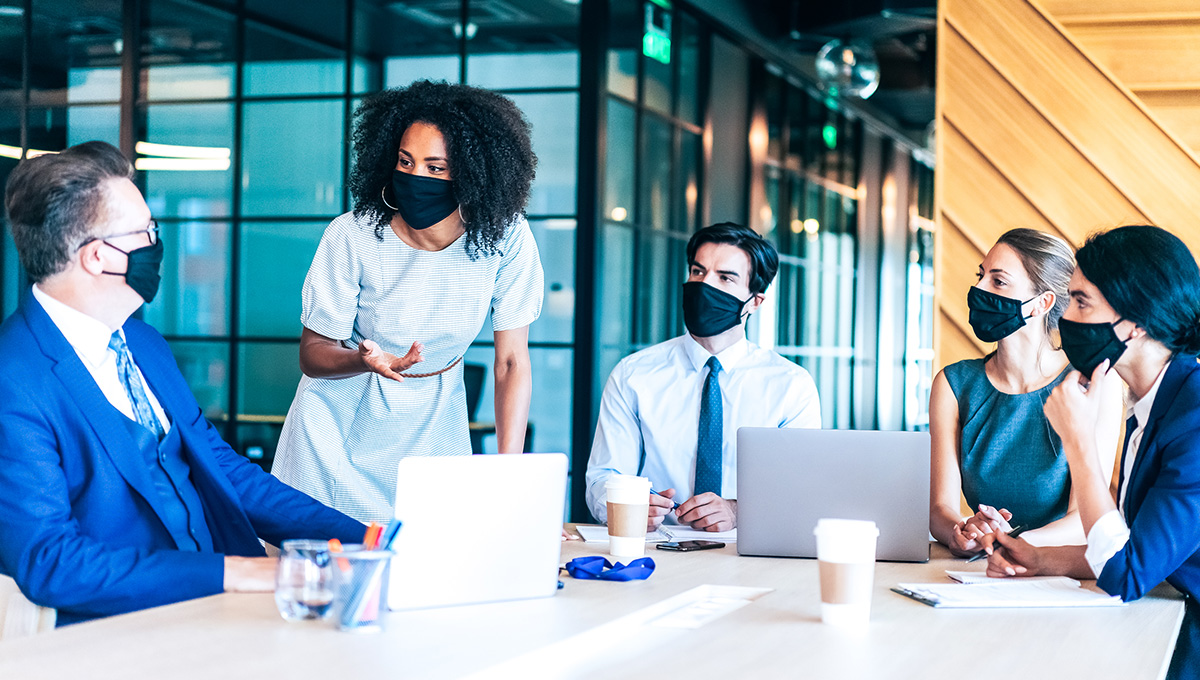On March 10, 2020, Michigan and South Dakota confirmed their first cases of COVID-19. Across the country, states gradually began introducing lockdowns, closing many businesses and dealing a devastating blow to the U.S economy. No one envisioned how disruptive the pandemic would be to the country and the globe. By this time next year, the United Nations estimates that total economic output will have fallen by $8.5 trillion, erasing almost all the growth from the past four years.
Nevertheless, a year after the dawn of the pandemic, most organizations operating then are still with us. In this article, we look at a few ways companies have transformed themselves digitally and, in the process, demonstrated surprising business resilience.
Distancing But Not Separating from Customers
The industries that have suffered are mostly those that require essential workers in in-person capacities, such as hospitality, entertainment, retail, mining, travel, manufacturing and construction. Some of the country’s most recognizable brands have filed for bankruptcy.
Many businesses that require in-person interactions have adapted, often enabled through digital transformations. Successful retailers, for example, have stepped up home deliveries while implementing curbside pickups, contactless payments and online self-service, as well as expanding call centers.
These technological shifts likely will be permanent. Since the dawn of the pandemic, 73 percent of Americans have dabbled in these new shopping behaviors and want to continue them. This trend also extends to B2B: McKinsey found that most B2B interactions have moved online, with 70-to-80 percent of B2B customers saying they favor end-to-end remote or digital service, citing safety and travel costs.
Moving to the Distributed Workforce Model
Pulling back from face-to-face interactions, whenever feasible, has extended to the people who make business run. One example is OnSolve customer athenahealth, a provider of electronic medical record and related services with more than 5,600 employees. Like most companies, it has a mix of employees who interact directly with customers and those who work remotely. In the early days of COVID-19, leadership decided to make every position it could remote. Within 24 hours, 98 percent had shifted to virtual operations.
A Gartner survey from March 10, 2020, showed that only 12 percent of businesses were prepared to manage the threats of COVID-19. Unlike many companies, though, athenahealth was able to pivot so rapidly because it had developed business contingency plans and a sound technology infrastructure. athenahealth adapted its plan for major disasters after its Southeastern team had experienced moving to a mostly remote model during the annual hurricane season.
As the pandemic worsened, other companies followed suit and shifted to a distributed model, while others scrambled to implement plans on the fly. A Pew study from the fall found that 71 percent of Americans were working remotely, up from 20 percent prior to COVID-19.
Like customers who had gotten a taste of the convenience and safety of digital buying, most employees decided they liked it, too. Fifty-four percent in a Pew survey said they wanted to continue working remotely post-pandemic. And organizations are listening. The McKinsey Global Survey reported that 79 percent of 487 organizations have found that digital transformations over the last two years, which includes collaboration and work-from-home software, have been an upgrade to their employees’ experience.
Improving Employee Communications for Greater Safety
At OnSolve, we’ve learned firsthand from our customers how they have used risk intelligence and critical communications technologies to carry out safety procedures. For example, an enterprise U.S. manufacturer of consumer packaged goods used risk intelligence technology to pinpoint which plants were located in COVID-19 hotspots, temporarily shuttering them and using their critical communications system to warn employees to stay home.
To keep manufacturing their food products, which have been in great demand with most people eating at home, the company ramped up production at facilities not affected by COVID. It also used its critical communications system to target employees in these safer locales using automated phone calls to shore up the shifts added to sustain capacity.
An OnSolve customer in Belgium used its critical communications capabilities to contact employees who had been traveling to hotspots like Italy in the days leading up to the pandemic’s explosion. The system automatically texted these travelers, asked them to quarantine for a week and reply to the message. Later that day, the system automatically contacted those who hadn’t responded, eventually reaching all travelers who may have been exposed.
Overall, companies have improved their internal communications to protect their workforces. This shift appears to be working. In the 2020 Cross-Organizational Field Study by global consulting firm Mercer, a whopping 91 percent of employees said their organization provided them with instructions on how to stay safe from COVID, with 72 percent reporting they were kept abreast of their organizations’ current and future plans.
Today the global economy remains rocky. But many countries are vaccinating tens of millions, and businesses are gradually reopening. By pivoting quickly to distributed workforce models and investing in digital transformations, many organizations have displayed remarkable durability while increasing the safety of both customers and employees. Amidst the shattered dreams of business owners and leaders across the globe, such resilience offers a good reason for optimism.

